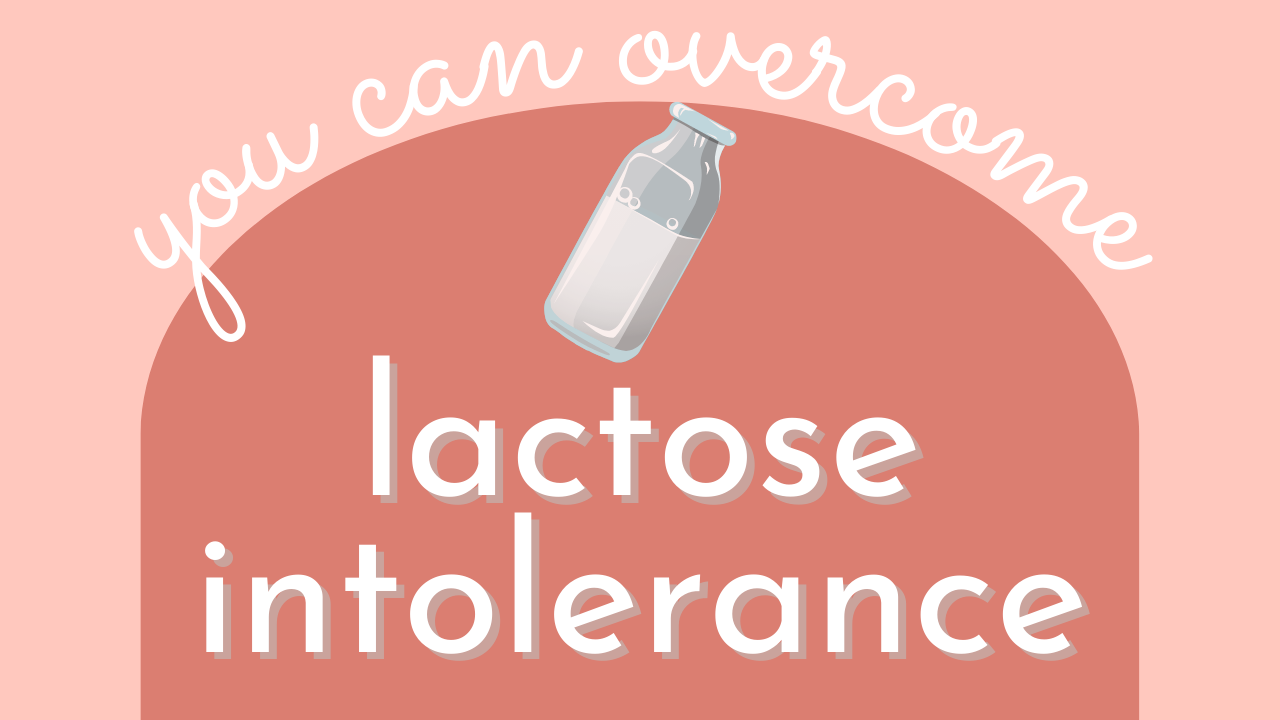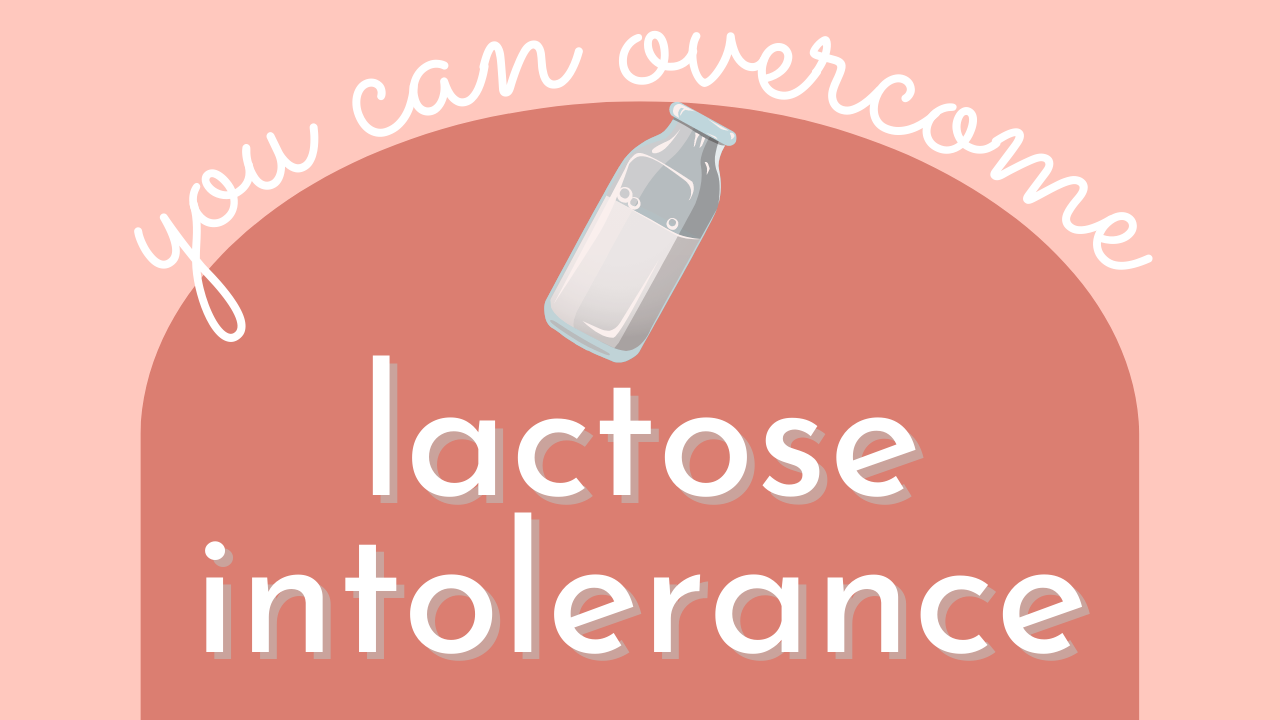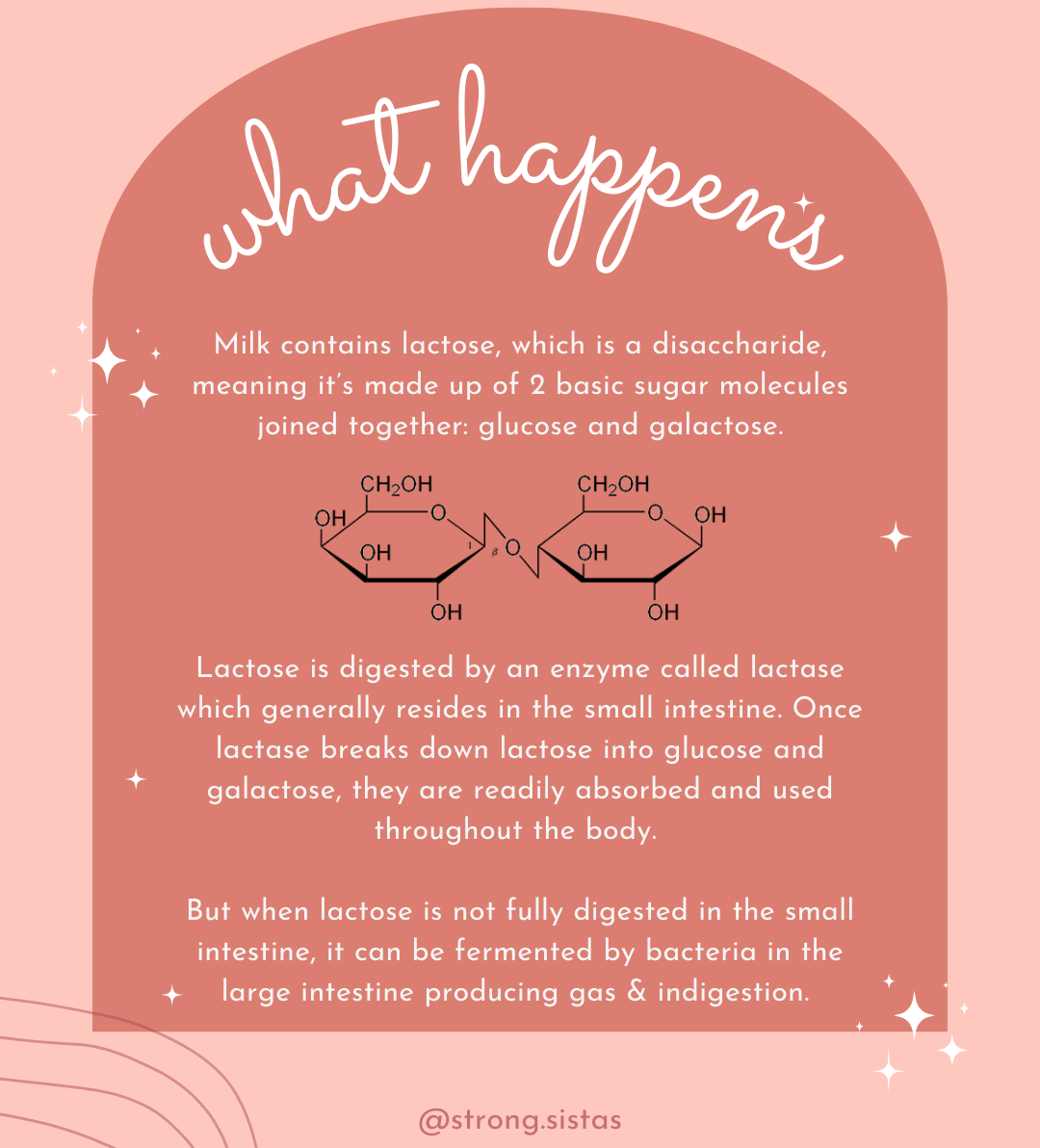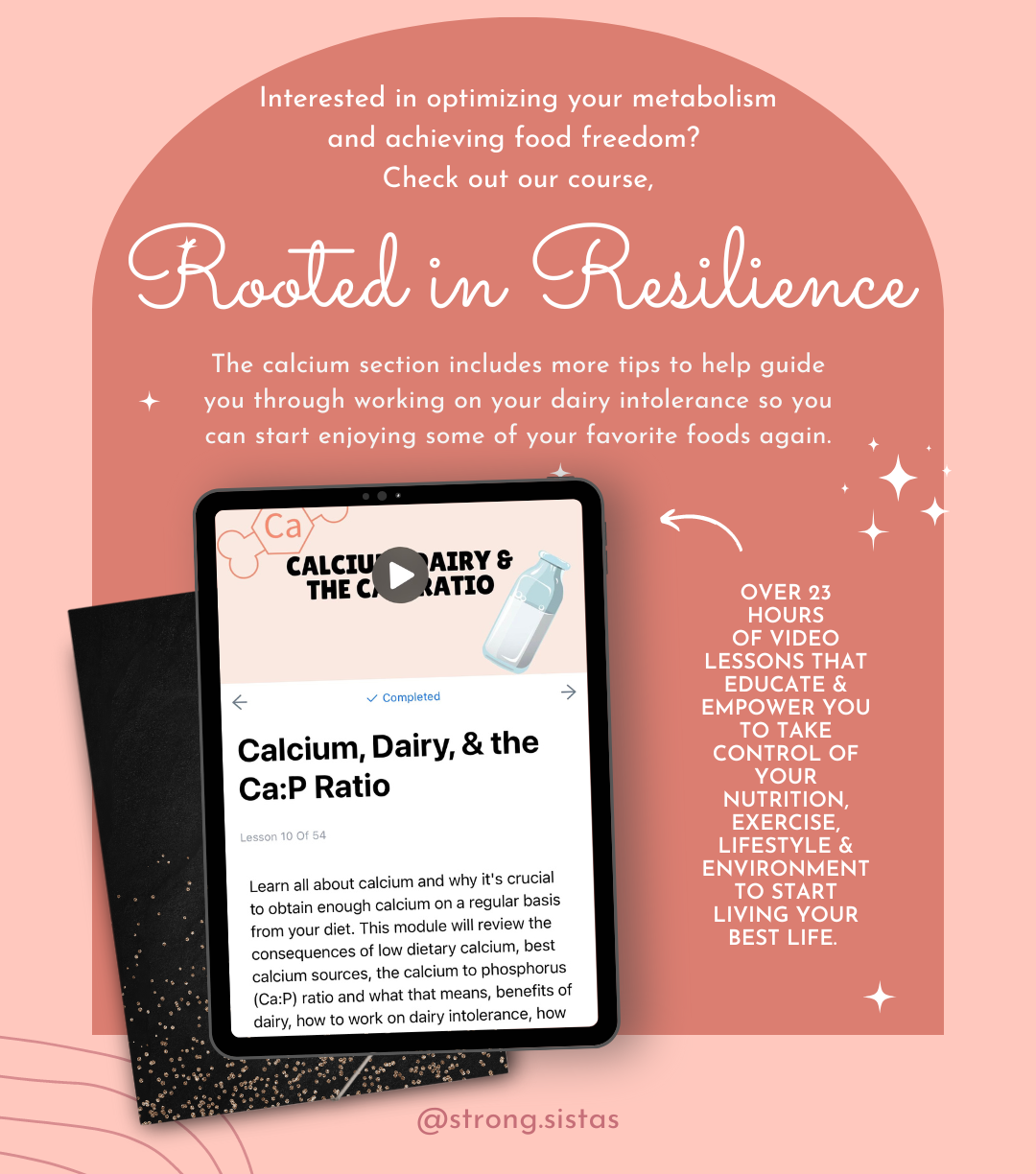Tips to overcome lactose intolerance
Jul 25, 2022
Digesting dairy is a skill that requires regular practice. The less you eat it, the harder time you may have digesting. But that skill can be worked on!
Yes, you can overcome lactose intolerance!
So in this blog post we will share tips on how you can improve your dairy tolerance.
We both used to react negatively to all dairy products, and would rely on nut tea alternatives. But after working on our metabolism and implementing the tips below, we now have dairy every single day!
You don't *have* to consume dairy, but it is a delicious, nutrient-dense food that humans have consumed for over 10,000 years.
Dairy provides:
- Bioavailable calcium & other minerals
- B Vitamins
- Fat soluble vitamins
- Lactoferrin
- Easy to digest carbs
- Healthy fats
- All essential amino acids
- Deliciousness
Dairy is a superfood (especially raw dairy) that provides a number of important nutrients. The NIH conference on lactose intolerance in 2010 concluded that withdrawal of dairy from diet to treat lactose intolerance leads to potential threats to bone health (1).
(And no, dairy is not inherently 'bad' or inflammatory. You can read more about this topic in this blog post.)
The digestion of lactose is a skill that requires regular practice. If you don’t regularly consume dairy, you will lose that skill. And the longer you restrict dairy, the worse your intolerance can get.
So, give yourself some patience to regain that skill!
And yes, those who are lactose intolerant can regain tolerance. A number of studies have shown an improvement in symptoms and dairy digestion after continuous consumption for 1-3 months. (2-4)
“[E]vidence at this time suggests that in the [lactose intolerant] paradigm the regular consumption of [dairy foods] over a prolonged period (which may be as little a 3–4 weeks) improves aspects of [lactose intolerance] symptoms.” (5)
If you haven't consumed dairy for a while, you have likely down-regulated your lactase enzyme needed for dairy digestion & have induced lactose intolerance. So ease back into dairy consumption & allow your body to increase lactase production.
The approach to improve dairy intolerance requires a twofold effort, addressing gut health while improving metabolism (these two go hand in hand)… and adding dairy back in slowly.
In regards to the gut - some research suggests that fermentation in the colon (due to a poor transit time and bacteria overgrowth - ultimately the result of a sluggish metabolism) is one of the reasons for lactose intolerance. (6)
On to the tips!
STEP 1: HABIT CHANGES to improve your metabolism and gut health
- Regulate blood sugar by consuming balanced meals every 3-4 hours
- Stop consuming hard to digest food (like raw kale), and packaged food with a bunch of fillers and gums
- Reduce consumption of seed oils which can damage gut integrity
- Add anti-inflammatory and gut healing amino acids from broth, collagen &/or gelatin powder
- Prioritize easy to digest food and eat enough to fuel your body, as digestion is an energy-intensive process
STEP 2: REINTRODUCE CERTAIN DAIRY PRODUCTS
- Start with 1 oz aged cheese (like pecorino romano, parmigiano reggiano, or quality gouda) a few times a week.These cheeses will contain less lactose.
- Experiment with greek yogurt, which has less lactose than regular yogurt and milk due to the straining and fermentation processes
STEP 3: REINTRODUCE MILK USING THESE TIPS
- Tip #1: Consume milk with a sugar source to stimulate enzyme production and improve digestion.
Dietary sucrose enhances lactase gene expression (7). In fact, carb sources containing fructose (like fruit, honey, fruit juices, sugar) have the largest increase in lactase enzyme upregulation (8).
Dietary sucrose sources to add to your milk = organic panela or cane sugar, maple syrup or honey.
Add a sugar source to your milk!
- Tip #2: when introducing milk, start with whole (full fat) milk
Or consume reduced fat milk with a fat source in a meal, since fat can slow gastric emptying, thus exposing the small intestine to less lactose per unit time making it better tolerated at the start (9).
But remember, we don’t want to over consume fat. So be mindful of your fat intake at meals.
Over time, you can likely tolerate lower fat milk varieties as you improve dairy interolance.
- Tip #3: Seek out raw milk from your local dairy farmer.
For some, raw milk is easier to digest since it contains beneficial bacteria that can aid your body in producing more lactase.
If you can, seek out raw goat milk since goat milk is fully A2. A2 protein is easier for some people to digest. As you improve your tolerance over time, you can experiment with cows milk (which contains some A1 depending on the breed).
After all those years craving dairy, and trying to reject and refrain, it’s so nice to be able to finally give the body what it wants without any negative side effects!
Dairy is delicious and nutritious! And should not be something we should fear or have to restrict.
Refs:
(1) Suchy, F. et al., 2010
(2) Habte, D. et al., 1973
(3) Sadre & Karbasi, 1979
(4) Johnson, A. et al., 1993
(5) Szilagyi, A., 2015
(6) He, T. et a., 2006
(7) Kuranuki, S. et al., 2006
(8) Tanaka, T. et al., 1998
(9) Ugidos-Rodriguez, S. et al., 2018
(10) Zhu, W. et al., 2013
(11) Jacqmain, M. et al., 2003
Need more assistance?
Our course, Rooted in Resilience can help you improve your metabolism & nix food sensitivities to tolerate more foods, not less - while still achieving all your body composition, physique & health goals. Learn more about our course.





